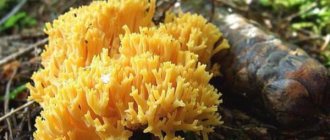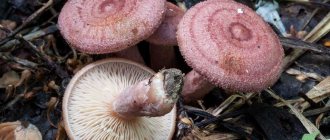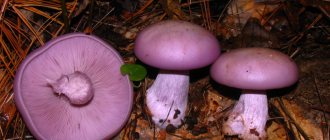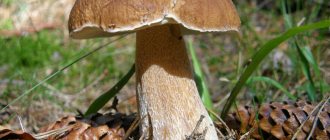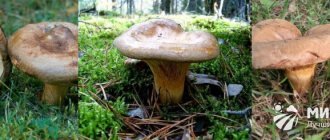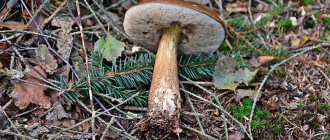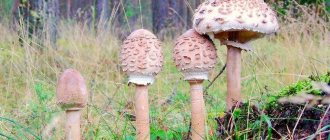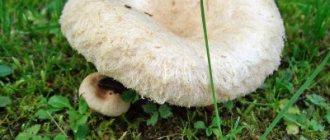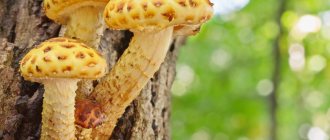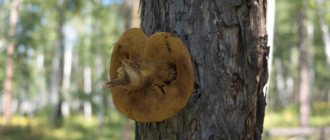Horned mushroom recipe. Cooking methods
The description of the mushrooms says that these plants are used in folk medicine, with their help they treat joints, expel worms, etc.
It must be remembered that poisoning often occurs due to negligence or complete illiteracy. You should not eat foods that you have doubts about. There is a separate opinion that convinces mushroom pickers that this type of plant is not suitable for classical preparation. Experts fundamentally disagree with this statement.
Edible hornets are prepared for future use, fried, added to soups, dried, and mushroom caviar and other dishes are prepared from them. Without any doubt, all existing recipes for forest “brothers” are also suitable for corals. In winter, the dry prepared semi-finished product is soaked in water, then fried in batter. Many exotic lovers use these specimens as a filling for dumplings and pies. They are also good fried with potatoes and onions.
A fragrant and tasty mushroom dish can be created from mushrooms marinated in a special sauce. It’s not difficult to prepare, just collect the necessary ingredients: oil, balsamic vinegar, lemon juice and salt with sugar. Pickled blackberries in a jar look like coral.
Mushrooms should be washed well before use, then placed in a pan of water and cooked after boiling for at least 10-15 minutes. Ready-made semi-finished products are used as desired. To prepare the filling, the lower plant is passed through a meat grinder, combined with other ingredients to taste and the main dish is prepared.
Morel
The morel is difficult to confuse with other mushrooms due to its unusual porous cap. The mushroom can reach 20 centimeters in height and is hollow from the inside. There are several edible types, for example, the edible morel, the conical morel and the tall morel - they all look similar to each other. The morel is an edible mushroom of the third category; it is believed that it needs to be boiled for 10-15 minutes before eating. The main thing is not to confuse the morel with the line, which often happens. Morels have an egg-shaped cap, conical, pointed upward. The caps of the lines are “wrinkled”, irregular in shape, reminiscent of a brain, their stem is less pronounced. If morels are harmless, then the lines contain strong toxins.
Zuma/TASS
Deer horn mushroom is poisonous. What does the deer horn mushroom look like and its difference from poisonous species
Deer horn mushrooms differ from many species in their non-standard shape for mushrooms, which resembles deer antlers - this is how the variety got its name. Having found such fruits in the forest, not every mushroom picker will decide to cut them, since this variety has several dangerous and poisonous counterparts, and its very appearance often causes concern among beginners in “silent hunting.”
Description of the deer horns mushroom
This variety is also commonly called yellow horntail, yellow coral and bear's paw. Outwardly, it resembles not only deer antlers, but also sea corals. The species does not at all correspond to traditional ideas about mushrooms due to the absence of a cap and stem as such.
What does a cattail look like?
Rogatik grows vertically (reaches 5-7 cm in height on average) and can grow up to 25 cm in width. It is distinguished by the presence of a large number of branches, thorns and brittle, fragile ears. Depending on the phase of ripening, the horns can change their color: young fruits are painted in light yellow shades, more mature ones – in rich orange. Some mushrooms may be beige or purple in color.
The rare deer horn mushroom is listed in the Red Book
It is an arboreal species, found on tree stumps and trunks. It grows in small colonies. The maximum weight of one fruit is up to 1 kg. The pulp of large mushrooms is easy to divide into several pieces. At the site of the break and cut, it begins to turn burgundy.
An interesting feature of this species is the absence of a characteristic “mushroom” smell.
Structure and features of the species
The base of the horntail is usually fused; oblong branches with spines up to 20 mm long extend from it. The average width of the fruiting body is 20-30 cm. The height of the mushroom rarely exceeds 7 cm, and often coincides with the diameter of the fruiting body. The branches extending from the base are characterized by blunt tops with unevenly truncated tips.
The flesh of the horns is watery and fragile, colored light yellow. Its peculiarity is a weak floury taste, which is not very pronounced. The pulp becomes bitter as the fruit ripens.
The staghorn mushroom belongs to the Ramaria family
The mushroom stem can reach 8 cm in width and 5 cm in thickness. It can be painted in any shade of yellow, becoming lighter closer to the base. If you press on it, it will turn reddish-brown. Spores form on the outer surface of the fruit, the spore powder is white.
Where they grow, in what forests and how to collect deer antlers
Horns are found in temperate climate zones on soils of coniferous and deciduous, and less commonly, mixed forests. They can grow alone, but more often you can find them in small groups. The mushroom season of this species begins in August and ends in September.
In many countries, the mushroom is listed in the Red Book, and there are several rules for its collection:
- You need to collect fruits only in wicker baskets, otherwise the mushrooms will turn into mush;
- during the cathedral, you need to choose only young specimens, since the old ones are more difficult to prepare and are unpleasant to eat (they are very bitter);
- when picking in hot weather, cut mushrooms should be covered with fern leaves or grass so that they do not burn in the sun;
- You need to cut the horns at the base, without touching the roots.
In Siberia
This species is equally common in both Eastern and Western Siberia in coniferous forests.
In Crimea
Horns can often be found in Crimea in coniferous and mixed forests. Its wide distribution in this area is facilitated by the mild climate and warm weather.
In the Far East
The fungus is widely distributed in the Far East, the Caucasus and Karelia. Almost never found in the central part of Russia due to the climate.
Rogatik grows in whole groups, forming rows or arcs
Varieties of edible hornets
Edible slingshots are a real boon for any mushroom picker. They are safe to eat and look similar to each other. They often grow in groups deep in coniferous forests.
bunch-shaped
The grape mushroom is a white mushroom that turns light pink as it ripens. The branches can reach a height of 15-20 cm, and its diameter is 10 cm. The fruiting body of older specimens is ocher or pinkish-red, often reminiscent of cauliflower. The lower branches are few, thin and oblong.
Bunch-shaped horntail
Reed
The species is characterized by a vertical tongue-like body, expanding towards the upper part of the fruit. The surface is dry and smooth, often colored light yellow. Has no characteristic odor.
Ramaria reed (pistil)
Golden yellow
Representatives of this species can be colored in any shade of yellow. Most often they are found under coniferous trees. They have a pleasant herbaceous smell and neutral taste.
Edible species of laticifers
There are about 120 species of laticifers in the world. But not all of them are suitable for use. Therefore, you should know which types of mushrooms can be collected for further cooking, and which ones should be avoided.
Ordinary
The mushroom has a fleshy cap measuring 8-15 cm. The shape is convex or hemispherical. Over time, it becomes flattened and slimy. The color is purple or brownish with a fawn tint.
The height of the mushroom stem is approximately 5-10 cm. It has a cylindrical shape, and its color matches the color of the cap. The pulp is white in color and has a pungent taste.
Oak
The oak milkweed has a brown-cream cap, in the central part of which there is a darkish spot.
The cap part grows to 5-10 cm in diameter. If the flesh is broken or cut, it begins to secrete a whitish juice. The smell of the mushroom is quite specific, hay. You can find the fruit in forests where there are many oak trees growing from June to October.
Camphor
The camphor milkweed grows in Eurasia and North America. Found in coniferous and mixed forests.
Important!
The fungus prefers acidic soil. For this reason, you need to look for it on rotting wood or litter.
The cap of a young mushroom is convex, while that of a mature one is flat. There is a small tubercle in the middle, the edges are ribbed. The skin on the surface is matte, its color can be dark red or brown.
The leg is cylindrical, brittle. Its size ranges from 3 to 5 cm. The pulp is loose and has a repulsive odor.
Bolotny
Swamp milkweed is found in almost any area, but especially prefers lowlands. It reproduces especially intensively from June to November. But a large accumulation of mushrooms is observed in August and September.
The cap is spread out, sometimes looks like a funnel and measures up to 5 cm in diameter. A sharp lump often forms in the center.
The mushroom pulp is creamy in color, but tastes unpleasant. Old swamp milkweeds secrete sap that has a burning and acrid taste.
Dark brown
The cap is relatively small - only 5-10 cm, which gradually opens. The surface is dry, velvety in young fruits. At first, the mushroom has a brown color, which fades over time.
The leg is low and thick. Height – up to 6 cm, thickness – from 1 to 1.5 cm in diameter. The dark brown milkweed begins to appear in July. Prefers conifers.
bluish
The glaucous milkweed grows mainly in deciduous forests, but is sometimes found in coniferous forests. The cap of young specimens is flat with a slightly depressed center. The leg reaches 8-9 cm in length. It is dense, narrowed at the bottom. The pulp of the fruit is very dense, and if it is broken, it begins to secrete a specific juice.
Milkman
The milkweed is a milkweed that has a wide cap and a low but dense stem. It is also called milkweed, red-brown milk mushroom, and commonweed. The cap reaches 5-17 cm in diameter and is reddish-brown or brownish-brown in color.
The pulp is whitish, with a yellowish tint added to the main color. Dense, fleshy, has a herring smell (although other notes may be present) and a sweet taste. Fruiting time is July-October. It is necessary to look for the mushroom in deciduous or mixed forests. In the second case, you can find it near the place where spruce trees grow.
Marinated deer horns recipe. Mushrooms: Deer horns
Good day! When they see this mushroom, many experienced mushroom pickers will say:
- What kind of nonsense are you asking me to collect???
And this is a mushroom that belongs to the fourth category, which is assigned to rarer mushrooms that are inferior in taste to other mushrooms from higher levels. They are preferred by gourmets, or truly experienced, knowledgeable mushroom pickers. But this does not mean that horned mushrooms should be avoided... After all, poisonous imitators of this mushroom do not exist in nature. And for some reason the worms avoid him. Moreover, one fruiting body can reach one kilogram in weight! Deer horns have a pleasant smell, of course, if it is not an old mushroom, which will be unpleasant to chew, even after several boils. Young deer antlers are delicious. The main thing is to know a few rules: - The most delicious mushrooms are only collected.
- Afterwards, it is better to boil the mushrooms in well-salted water for 15-30 minutes, then drain the broth. Drain the mushrooms in a colander and rinse again under running water.
- Next, fry them, for example, with potatoes, or cook mushroom soup, or you can simply serve them as a side dish for meat after the first boiling and washing.
- It is best consumed within the first three to five days after harvest.
- Deer horns should not be pickled or preserved.
- Salting is the only acceptable storage method.
Deerhorns, like morels, are one of the dirtiest mushrooms. They should be washed several times in running water.
However, according to some information, the mushroom is listed in the Red Book, so you can only find deer horns in some regions. These are the Far East, Western and Eastern Siberia, as well as Karelia and the Caucasus. I took the mushroom in the photo in Serebryany Bor, which is located in the city of Kemerovo. And I must say that I didn’t touch it, because... it was small, and at that time I already had a good catch of honey mushrooms in my basket... But if I ever come across a worthy specimen, I will definitely collect it and cook it, and at the same time I will take another photo recipe!
Kalocera adhesive
From the appearance of this mushroom one can assume that its habitat is the seabed. Indeed: the species resembles coral thickets or algae that, through unknown means, got to land. The second thing that comes to mind is the developed buds of sprouted potato tubers. Be that as it may, Kalocera adhesive is definitely an extraordinary inhabitant of the forest floor.
The fruit body is elongated, vertical, egg-colored with shades of ocher, slightly reddening from time to time. Kalocera adhesive reaches 5–6 cm in length and up to a centimeter in diameter. The fruiting bodies of the colony willingly grow together at the base and continue to grow in a small “bush”. At the apex, the body bifurcates into pointed processes, forming two or three typical spines. Spores are formed on the entire surface of the mushroom. The pulp is gelatinous, the mixture resembles rubber, and the color is slightly lighter than the surface layer. Kalocera has a “raw” smell of rottenness and a slightly sweet taste.
Kalocera adhesive grows in large colonies, less often singly, on the remains of putrefactive wood. It often seems to outsiders that this mushroom can grow on the soil, but this is not so: under the layer of soil there will certainly be a half-rotten log or the remains of a stump. Kalocera is the causative agent of brown rot on commercial trees.
Among similar mushrooms, it is necessary to note Rogatiki, which quite well imitate the appearance of kalocera, but upon detailed study they differ in the structure of the pulp and the taste and aroma.
Kalocera adhesive bears fruit throughout the summer, catching the warm days of spring and autumn.
Based on the belief that it is edible, there are different ideas about Kalocera adhesive. Some sources consider it edible, but are silent about its possible processing, others do not mention it at all in the lists of edible mushrooms. But this mushroom also did not fall into the poisonous category. It is believed that due to its small size and rarity, the mushroom never received its own place in the culinary ranks, and is considered inedible.
How to clean deer antlers. Deer horn mushrooms: characteristics and cooking features
Mushrooms “deer horns”, or coral-shaped hedgehogs, are also known to many mushroom pickers under the names coral mushrooms, coral-shaped hericia or lattice-shaped hedgehogs. The Latin name of this edible mushroom from the genus Hericium or Hericium is Hericium coralloides.
Botanical description
A full description of Hericium coralloides can be found in the Red Book of Russia, where the coral hedgehog is listed as a rare species. “Deer horns” have a very beautiful exotic appearance. In the coral-shaped hedgehog it is difficult to distinguish the cap and stem, therefore, when characterizing and describing this species, we can only talk about the fruiting body as a whole. The fruiting bodies of Hericium coralloides look a bit like coral branches.
The above-ground part of hericia is very decorative, multi-branched, snow-white in color. Relatively long spines 10-20 mm high, thin and quite brittle, cover the branches of the fungus almost to the very base, most often located on the lateral side. The average diameter of the fruiting body does not exceed 25-30 cm.
The pulp is initially white, but as the mushroom grows and develops it acquires a characteristic yellowish color. Elastic in its raw form, after cooking it becomes harsh. There is no pronounced mushroom aroma. Fruiting occurs from June to October.
Deer horn mushrooms: description (
Where it grows
Most often, the mushroom grows on trunks, branches and hollows of deciduous trees, as well as on stumps. It is most often found on aspen, elm, oak or birch. In the southern regions, the hedgehog prefers to colonize the wood of elm, oak and linden. In temperate latitudes it is most often found on birch and aspen. In our country, “deer horns” can be found in almost any forest zone, except for the forests of the most northern regions.
Poisonous or edible
The mushroom of the species Hericium coralloides belongs to the category of edible mushrooms. The fruiting bodies have such an unusual appearance that hericia has no inedible or poisonous counterparts. In terms of nutritional and chemical composition, as well as pharmacological value, Hericium coralloides is highly similar to the relatively common combed hedgehog.
100 g of raw pulp contains:
- potassium – 254 mg;
- phosphates – 109 mg;
- sodium – 8 mg;
- calcium – 6.7 mg.
In addition, the composition of mushroom pulp is enriched with all free amino acids, except methionine and tryptophan, and also includes a significant amount of ketones, lipid substances, phytoagglutinin and sterols.
Hericium coralloides is widely used in traditional Chinese medicine, where it is used to treat stomach and gastrointestinal diseases, as well as to improve the function of the respiratory system. Pronounced antitumor and immunostimulating effects are noted, as well as antigeriatric effects and hypoglycemic activity of the mushroom pulp.
Cooking methods
The vast forests of our country abound with all kinds of mushrooms. However, not every lover of quiet hunting is lucky enough to encounter a coral-shaped hedgehog. From “Deer Antlers” you can prepare a very large number of very tasty and incredibly healthy dishes.
You can cook in completely different ways. Dried coral hedgehog can be soaked and then boiled or fried in batter. A very tasty and aromatic mushroom dish is obtained if the fruiting bodies of “deer horns” are marinated in a sauce made from oil, balsamic vinegar, sugar, as well as salt and lemon juice.
According to experienced mushroom growers and amateur mushroom pickers, the coral hedgehog does not have a pronounced taste, therefore, regardless of the cooking method, the culinary impression of it is quite mediocre. The main advantage of “deer horns” is their extraordinary beauty.
Benefits and harms
The chemical composition of yellow ramaria includes:
- vegetable protein;
- sterol;
- amino acids;
- lipids.
Consumption of the mushroom has a beneficial effect on the body and promotes:
- increasing immunity;
- improving the functioning of the respiratory system;
- removing toxins and neutralizing free radicals;
- reducing the risk of cancer;
- strengthening the walls of blood vessels, preventing thrombosis and stabilizing the functioning of the cardiovascular system;
- normalization of blood pressure;
- removal of toxins and wastes.
Important! The information presented in the material is for informational purposes only. Before use, be sure to consult a specialist.
In cosmetology, it is widely used in skin rejuvenation procedures. Ramaria is capable of retaining moisture in the epithelium. And natural polysaccharides saturate the deep layers of the skin with essential nutrients. Metabolic processes are also activated thanks to vitamin D.
Contraindications to the use of yellow hornet:
- children under 7 years of age;
- pregnant and lactating women;
- people with diseases of the digestive system and gastrointestinal tract;
- allergy sufferers.
Rogatik coral-shaped. Rogatiki mushrooms
Rogatik is the common name for basidal fungi.
General description The fruiting bodies are erect, rod-shaped, club-shaped or branched in the form of a bush. The color is white, gray, yellow, cream and other colors. Inhabits forests on soil, litter and rotten wood. Many are edible, but are not usually collected by the public. There are no poisonous ones that are dangerous to human life. But there are inedible ones, with a bitter taste or unpleasant odor.
Rogatiki:
Conditionally edible
Ramaria yellow
Lat:
Ramaria flava
Synonyms: Yellow stag, Bear paw, Deer horns, Yellow coral.
76559
10
Clavicorona flap-shaped
Lat:
Artomyces pyxidatus
Synonyms: Artomyces vitreous, Clavicorona box-shaped, Deer horns, Mushroom cabbage, Mushroom noodles, Clavicorona pyxidata.
15612
15
11034
5
Ramaria vulgare
Lat:
Ramaria eumorpha
Synonyms: Invala hornet, Spruce hornet, Ramaria Invalii, Clavaria invalii, Clavariella eumorpha.
Light ocher, yellowish bushes of Ramaria Intvala are often found in coniferous forests; this is one of the most common types of ramaria.
Characteristics:
- Shape: coral-shaped
7330
3
Clavulina coralliformes
Lat:
Clavulina coralloides
Synonyms: Clavulina cristata, Clavulina cristata.
Headings: K, Inedible mushrooms
6963
3
In coniferous or mixed forests, height 7-12 and thickness 1-3 centimeters
Characteristics:
- Shape: club-shaped
6541
2
Narrow, tall: up to 10-15 cm tall, up to 1 cm thick at the widest part. In deciduous and mixed, you need oak, aspen, birch.
Inedible ramaria
There are still inedible representatives in this family, but worthy of attention and photography: ramaria is tough, more slender and straightforward, with parallel growing branches and turns red/brown when pressed. Initially bitter.
Ramaria is ocher-lime green when young, rapidly turning blue/green when damaged. Rarely found, mainly in coniferous forests on the forest floor. Bitter.
This mushroom, strictly speaking, is not particularly ramaria. First, the mushroom was assigned to the genus Clavaria, then to Ramaria, and now it is called pheoclavulina fir. Rotator walking through the sections.
Phaeoclavulina abietina.
Rogatik reed, how to cook. Rogatik reed
Rogatik reed, or clavariadelphus reed, mace, pistil, belongs to the edible varieties.
The fruit body, 0.5-3 cm in diameter, is club-shaped and has no branching. The color is yellow with a slight orange tint or cream. The mushroom stalk tapers towards the base.
The mushroom pulp of young specimens is spongy, elastic, white, while in adult mushrooms it is dry and brittle. There is no smell.
Height 5-8 cm. Grows in a group of fruiting bodies pressed against each other. The surface is initially smooth, but wrinkles over time. The internal structure is hollow.
Irina Selyutina (Biologist):
The fruiting body of Horntail reed is characterized by the complete absence of a cap and stem. Fruiting bodies may press against each other during development. Their base is pubescent, resembling felt. Young bodies are cream or yellow, then the color becomes ocher-yellow, and mature ones are brown with a purple tint. This purple tone is noticeable at the base of the mushroom.
The structure of the horned flesh changes with age: from soft, spongy to dry and brittle. A purple tint appears when cut or broken. Although the mushroom has no taste or smell as such, it can still be bitter.
Clubworts are found in fairly large groups - up to a hundred or more. This species is widespread in all forest zones in the post-Soviet space.
It grows mainly among coniferous trees (spruce, pine) in the litter, among moss and in fallen pine needles. Fruiting begins in July and lasts until November. Peak activity occurs in October.
Practical use
Rogatiki have found their practical application in cooking and medicine.
Cooking
The reed and comb horntails belong to conditionally edible species with low gastronomic qualities of category 4, because their flesh is often bitter. They are not mass produced. It is recommended to collect only young specimens.
The advantage of edible cattails over others is that they are not affected by worms.
Bitterness is removed by prolonged soaking in cold water (for 10-12 hours) followed by heat treatment or salting. The duration of pre-boiling before cooking is from 1 hour.
Medicine
The mycelium contains melatonin, serotonin and hydroxytryptophan, which together play the role of a natural antibiotic. The contained polysaccharides delay the development of Ehrlich ascites carcinoma and Crocker sarcoma.
For your information. Melatonin is the secretion of one of the glands of the brain - the pineal gland and is responsible for the so-called. circadian rhythms of the body, i.e. for biological processes associated with the change of day and night (our biological clock).
Growth [ edit | edit code ]
Saprophytic mushroom. Widely distributed in the northern temperate zone. Grows in deciduous, less often coniferous, forests, parks and gardens on decaying wood of all types, including rotting stumps, trunks and branches of deciduous trees (birch, oak), sometimes coniferous (pine) species, dead wood, piles of bark, occasionally found on the ground near stumps It grows abundantly on sawdust and wood chips. It is especially common in cleared areas. Grows singly or in small groups. In Russia it is found from the end of May to the end of October; in the central zone of the European part of Russia it is most abundant from mid-June to early July and from late July to the end of August. Common even in dry years.
Answers to common questions
Mushrooms of normal shape raise a lot of questions among mushroom pickers:
When collecting any mushrooms, certain rules must be strictly observed: the crop is cut and not ripped off by the roots; The soil and moss in the forest should not be stirred up or dug up too much; picking mushrooms in nature reserves is prohibited; mass collection of any species will certainly lead to its extinction.
The rubbery pulp of kalocera has a reddish tint. The false mushroom has no taste or smell. The fruiting body has pointed branches and is dark yellow or orange. Real yellow corals are very similar to Kalocera, which are not characterized by the cartilaginous and gelatinous consistency of the fruiting body.
The coral hedgehog is one of the most unusual representatives of its family. It is famous not only for its interesting shape, but also for its good taste. But when collecting this species, you should be extremely careful, because it can easily be confused with false corals.
The world of mushrooms is truly fascinating and unique. These organisms are unique in themselves and can surprise you with their shapes, complex life cycles, and taste.
In the forests you can sometimes find an unusual mushroom that looks like coral. People call it “deer horns”. Let's talk more about these mushrooms.
Precautionary measures
There are many plants that look like deer legs. Many of them are quite poisonous. Therefore, if you are new to this business, then ask an experienced mushroom picker to tell and show how to correctly collect and distinguish deer legs from other plants.
Remember that after harvesting, before cooking, you must rinse and process them well, because if not prepared correctly, they can have serious negative effects on your body.
Do not harvest near highways, as plants quickly absorb toxic substances.
Source
